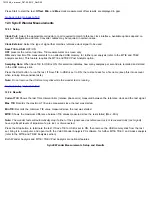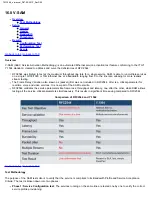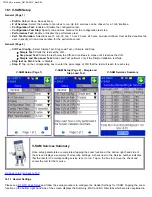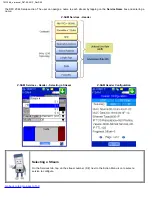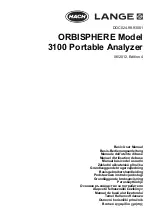
Pri:
VLAN priority 0 to 7.
Type:
Set to 8100. Indicates 802.1q tag type.
DHCP Options:
DHCP options can be edited. Off, All, Vendor Type, User Class, Host Name, and Vendor Info.
Note
: DHCP Options are only available under AUTO or DHCP.
Port Setup
Refer to 12.0 SyncE
section for further configuration instructions, then continue to Mode Setup. Reference Clock
configuration instructions can be found in the 12.1.2 SyncE
Setup section. Prior to starting the 1588v2 operation, the
selected test port must be connected to the network.
13.1.1 Mode (Test Mode)
Setup - Master-sync
Setup - Slave-emulation
Clock Mode:
Master-emulation, Master-sync, Slave-emulation and Slave-sync.
Master-emulation:
Emulates a 1588v2 PTP Master clock device out of the Ethernet test port (10/100/1000BaseT
or 100/1000BaseX). It uses an internal or external reference clock.
The reference clock used on the 1588v2 link can be made available for other network elements out of the PDH TX
port.
Slave-emulation:
Emulates a 1588v2 PTP Slave clock device from the Ethernet test port (10/100/1000BaseT or
100/1000BaseX). The 1588v2 Slave recovered clock can be regenerated out of the PDH TX port with a different
clock format and is synchronized.
Master-sync:
Emulates a 1588v2 Master clock device out of the Ethernet test port (10/100/1000BaseT or
100/1000BaseX). It uses an internal or external reference clock. The reference clock used on the 1588v2 PTP link
can be used for Ethernet and PDH testing simultaneously while the clocks are synchronized, the PDH TX port can
be used for BERT testing.
Slave-sync:
Emulates a 1588v2 PTP Slave clock device from the Ethernet test port (10/100/1000BaseT or
100/1000BaseX). Clock recovered from the 1588v2 PTP link can be used for Ethernet and PDH testing
simultaneously while the clocks are synchronized. The PDH TX port can be used for BERT testing.
The main application of the Sync mode is to test whether the PDH network and Ethernet network are properly
synchronized.
Protocol Mode:
IPv4 UDP, IPv6 UDP or Layer 2
IPv4 UDP:
The PTP messages are transmitted with an IPv4 and UDP encapsulation.
IPv6 UDP:
The PTP messages are transmitted with an IPv6 and UDP encapsulation.
Layer2:
The PTP messages are encapsulated directly in an Ethernet frame without IP or UDP header.
_e-manual_D07-00-051P_RevD00
Summary of Contents for VePal TX130M+
Page 1: ...TX130M _e manual_D07 00 051P_RevD00...
Page 19: ...Go back to top Go back to ToC TX130M _e manual_D07 00 051P_RevD00...
Page 69: ...Go back to top Go back to ToC TX130M _e manual_D07 00 051P_RevD00...
Page 105: ...Go back to top Go back to ToC TX130M _e manual_D07 00 051P_RevD00...
Page 171: ...Go back to top Go back to ToC TX130M _e manual_D07 00 051P_RevD00...








